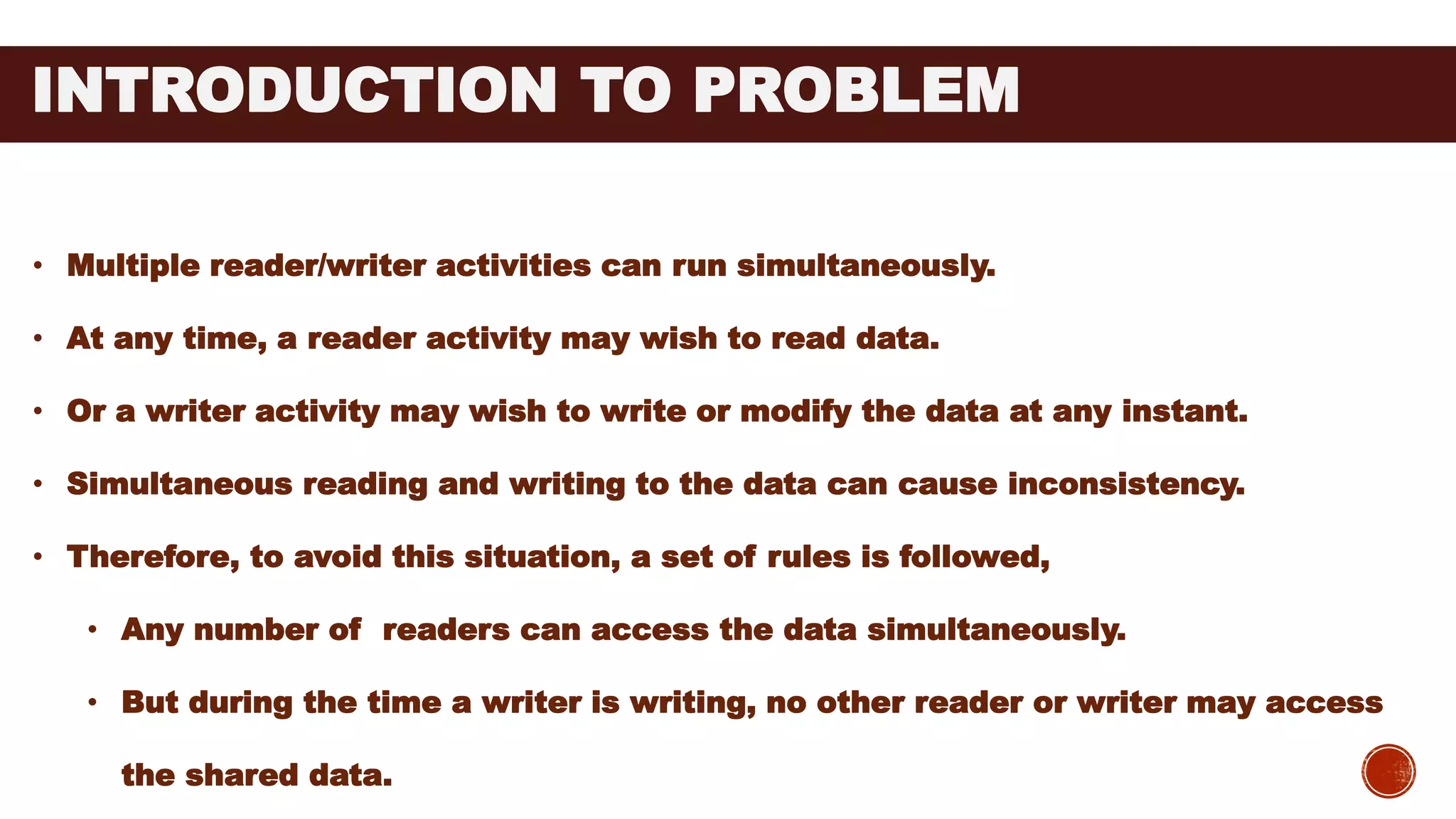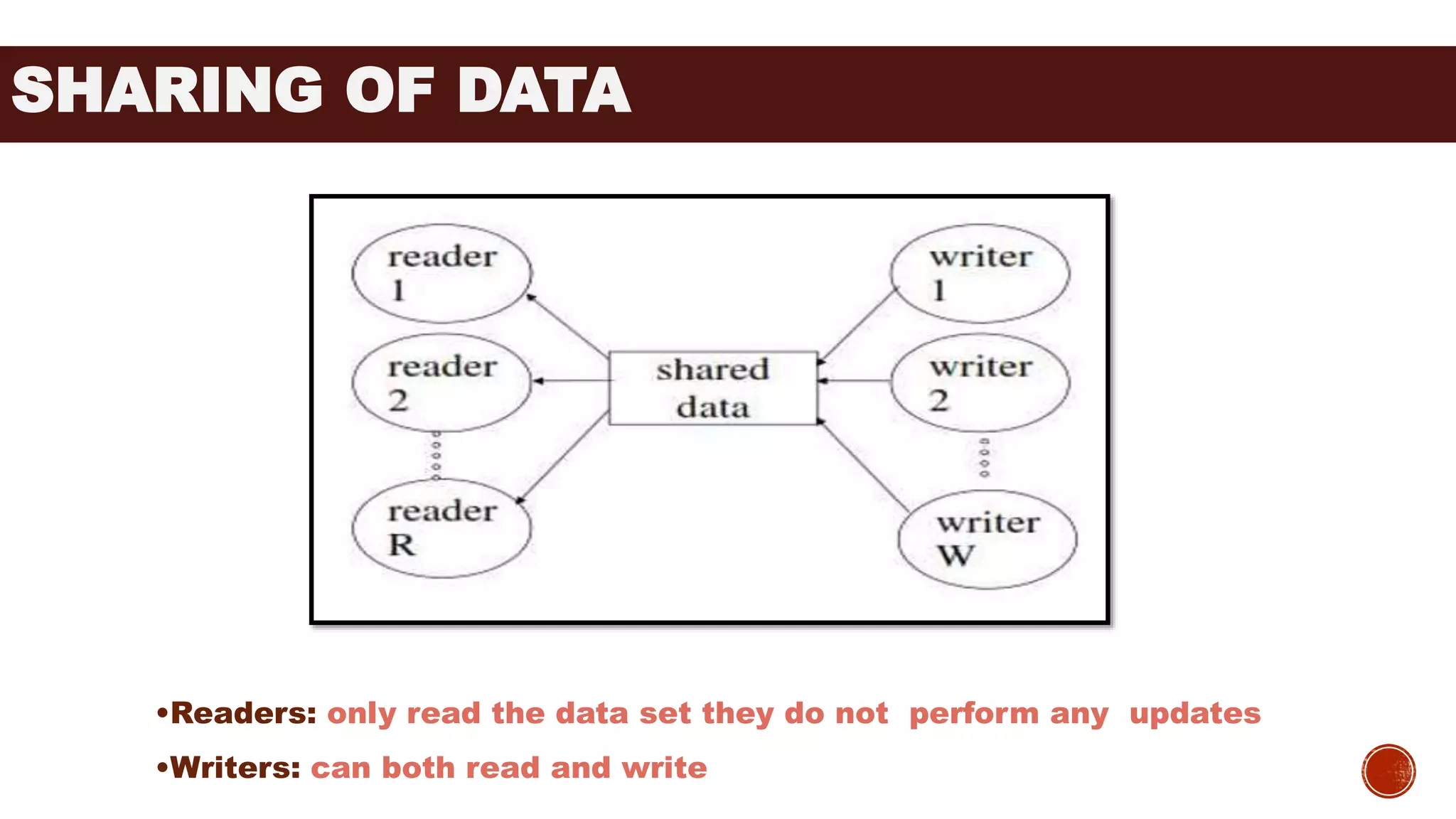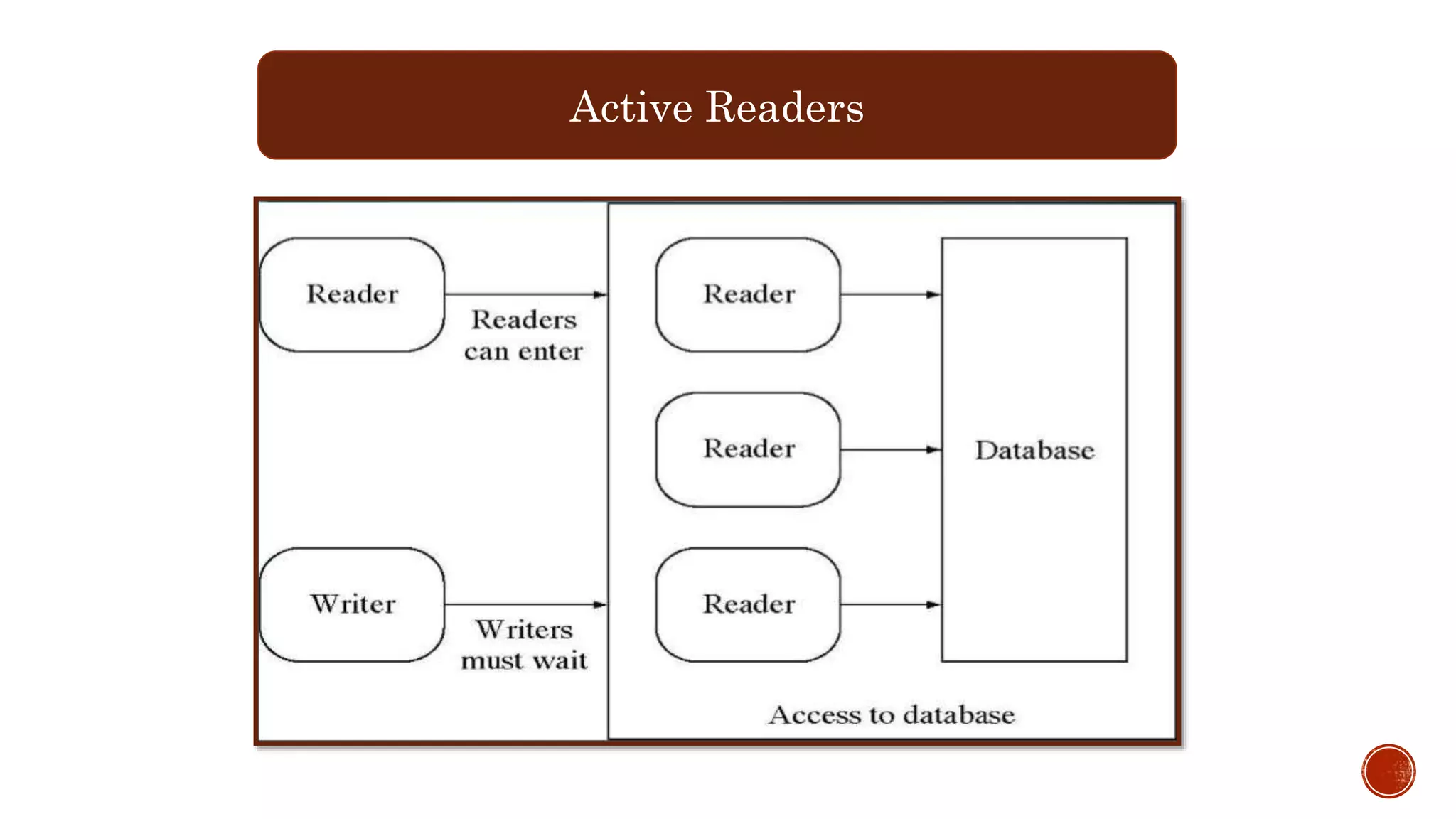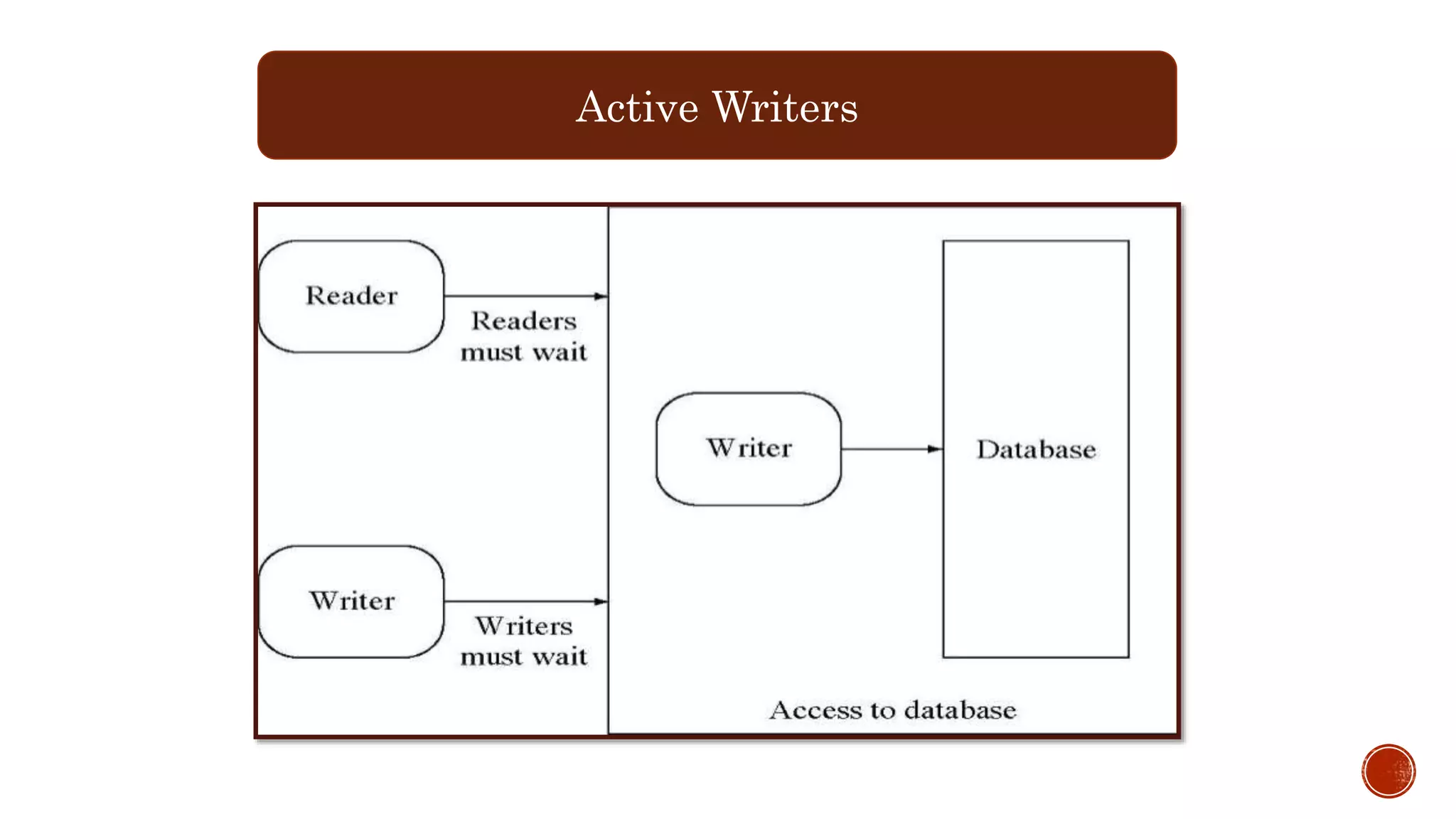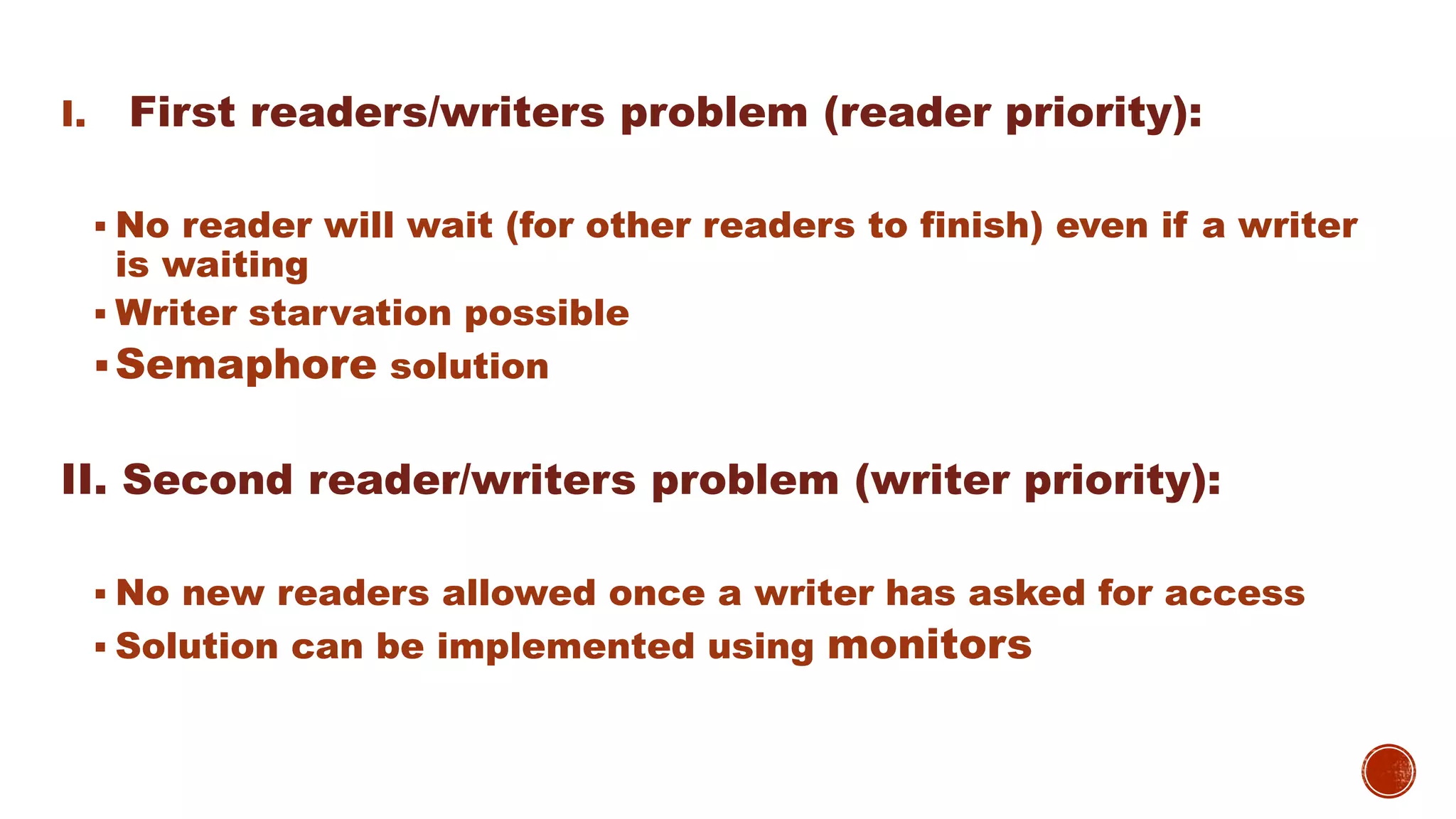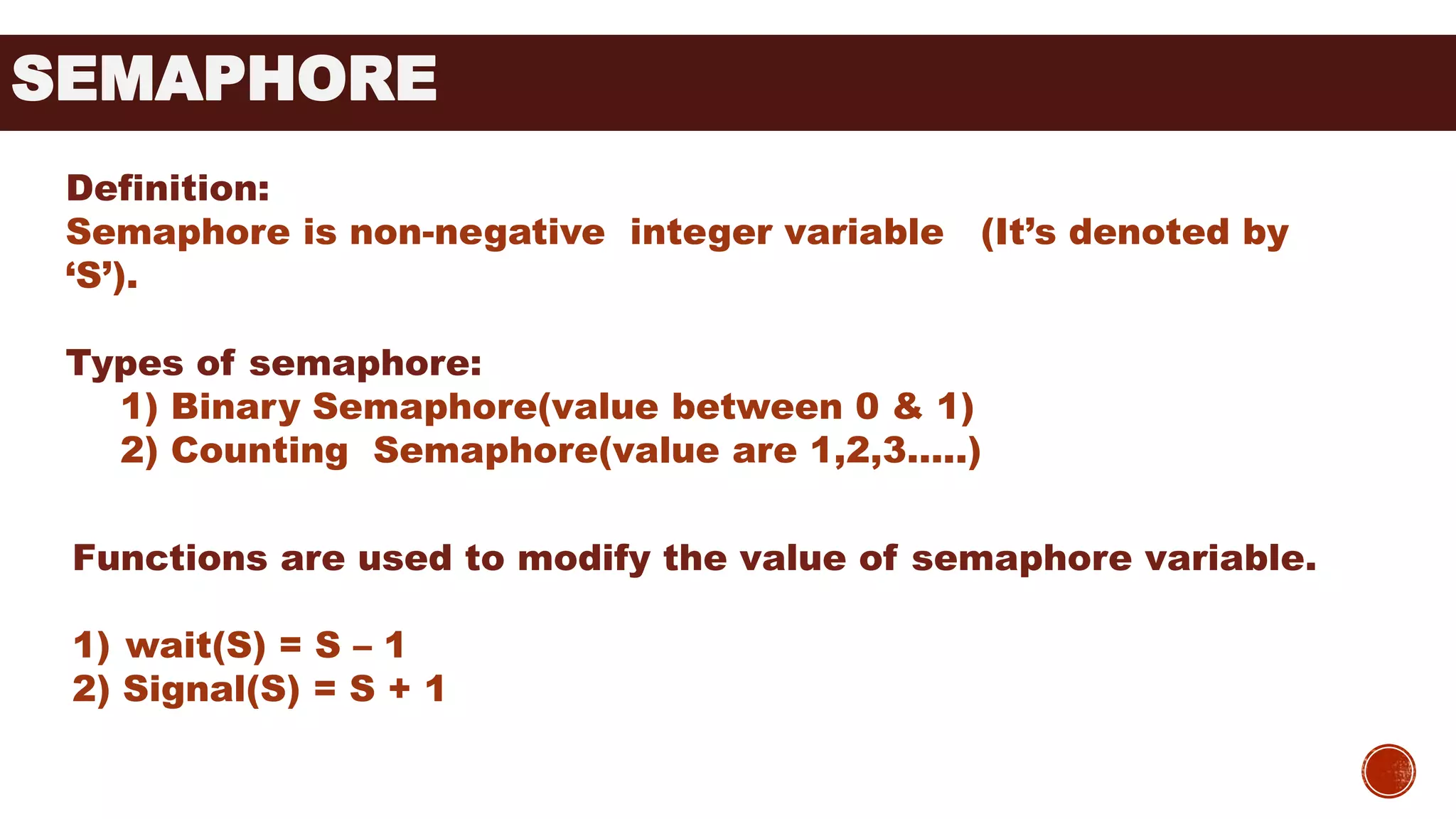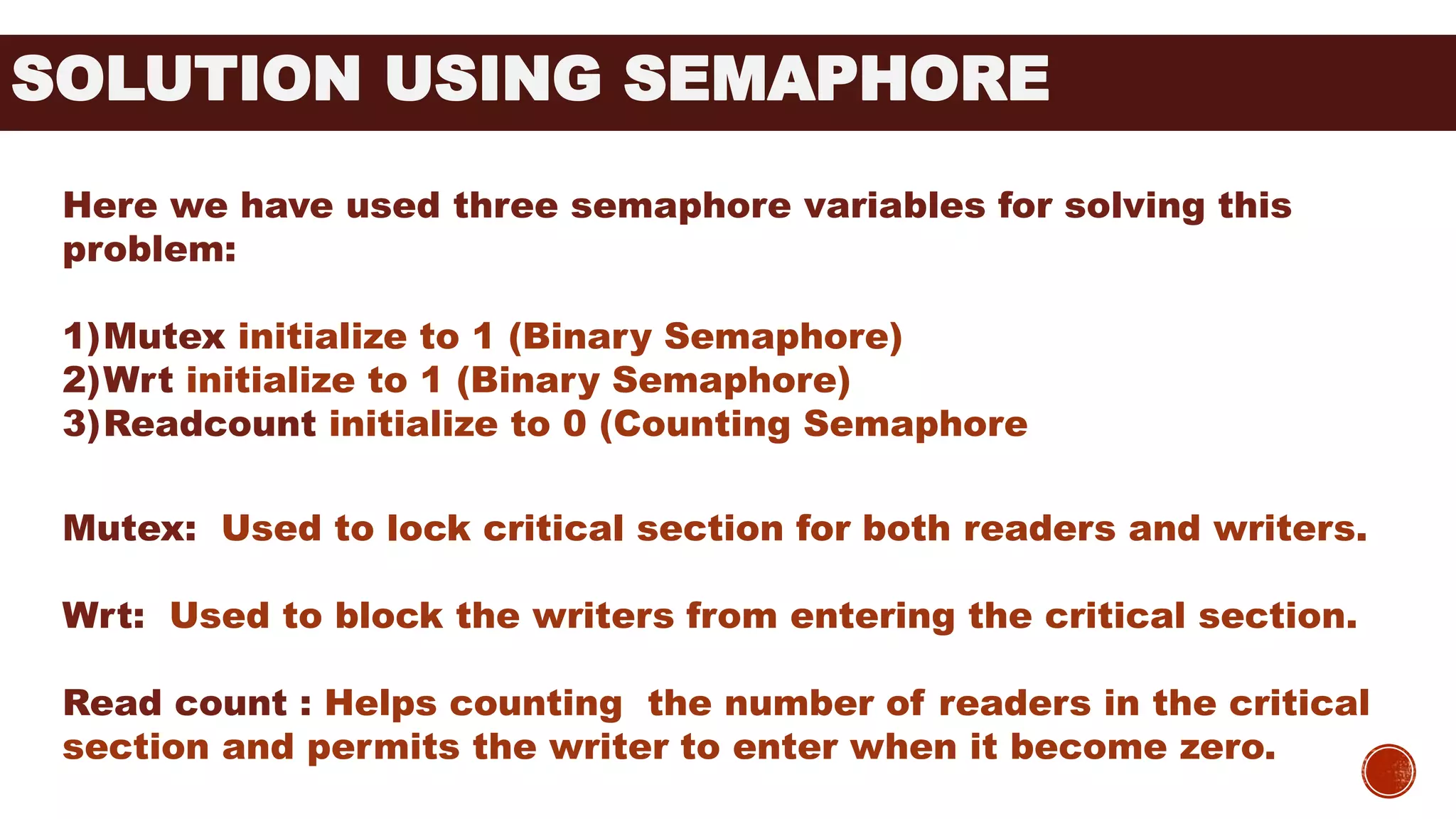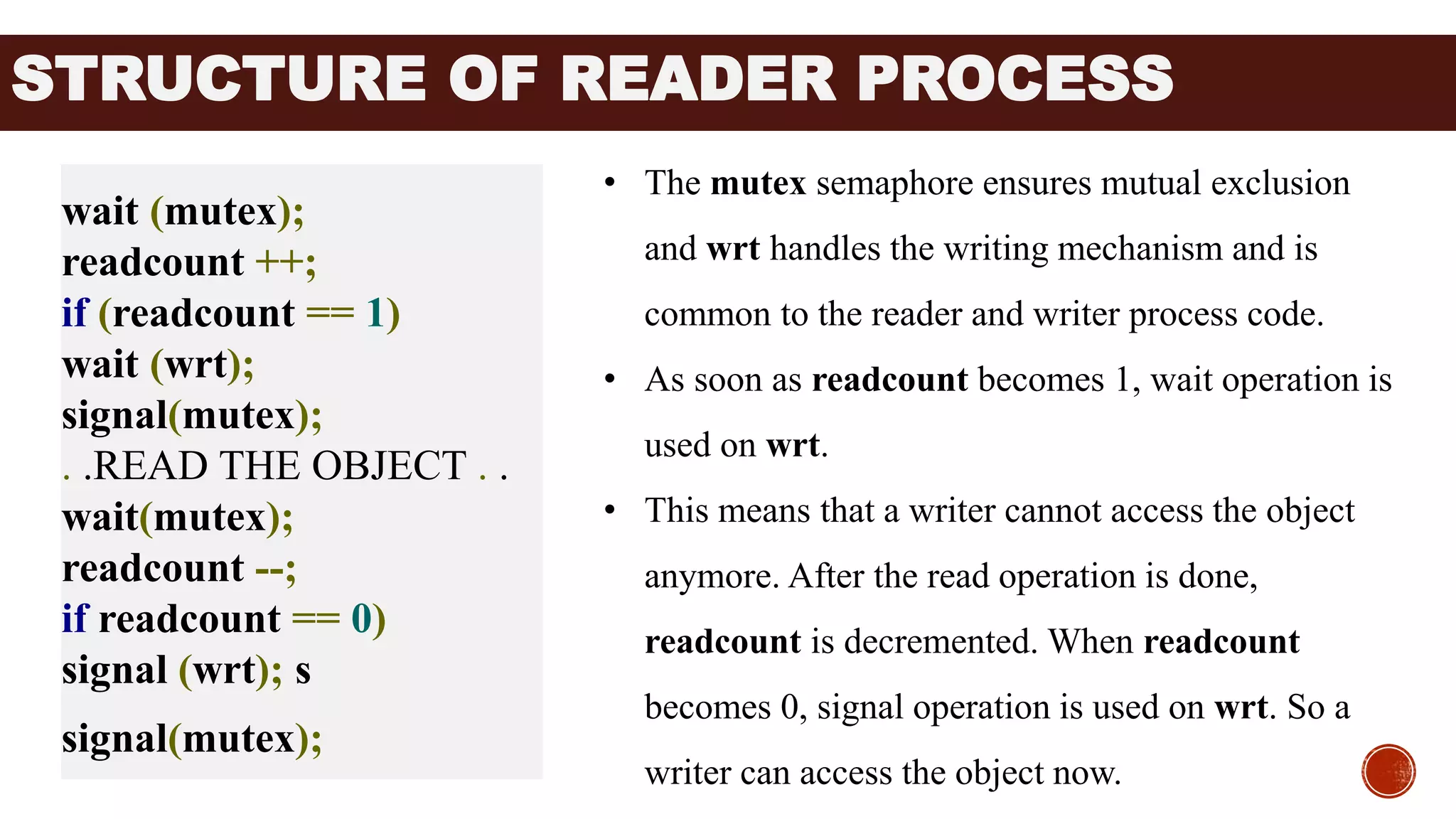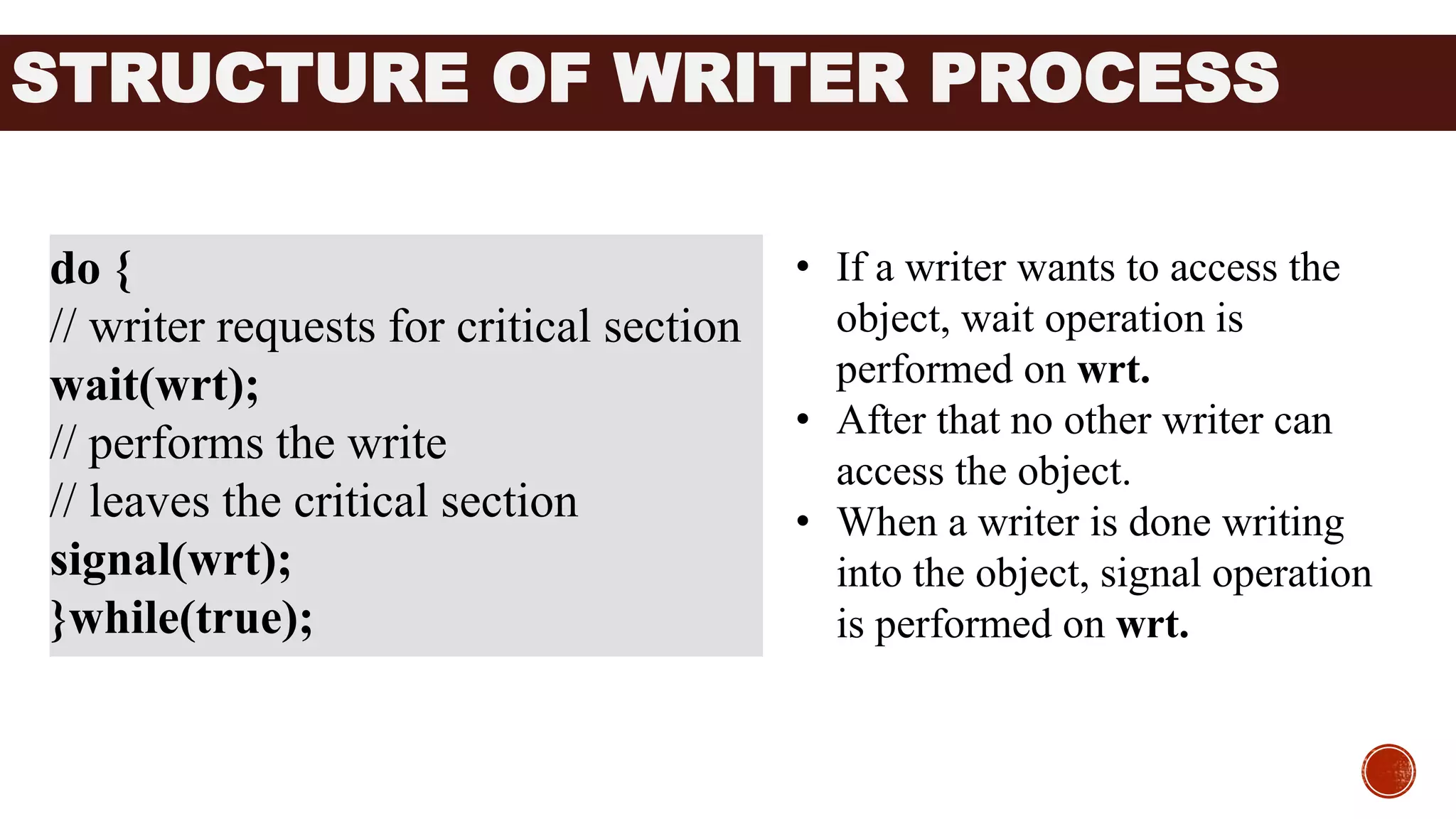The reader/writer problem involves coordinating access to shared data by multiple reader and writer processes. There are two main approaches: (1) prioritizing readers, where readers can access the data simultaneously but writers must wait, risking writer starvation. This can be solved using semaphores. (2) Prioritizing writers, where new readers must wait if a writer is already accessing the data. This prevents starvation and can be implemented using monitors. The document then describes how to use semaphores to solve the reader/writer problem by prioritizing readers, with mutex, wrt, and readcount semaphores controlling access for readers and writers.

